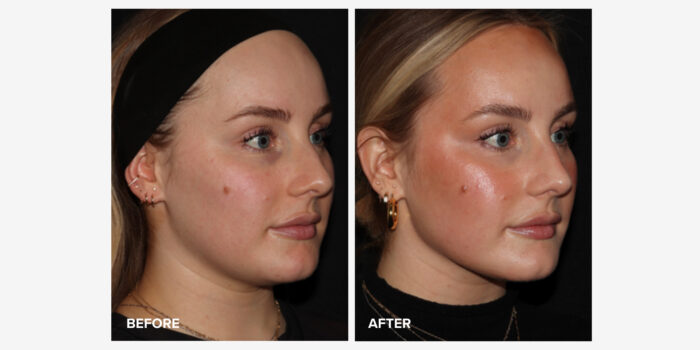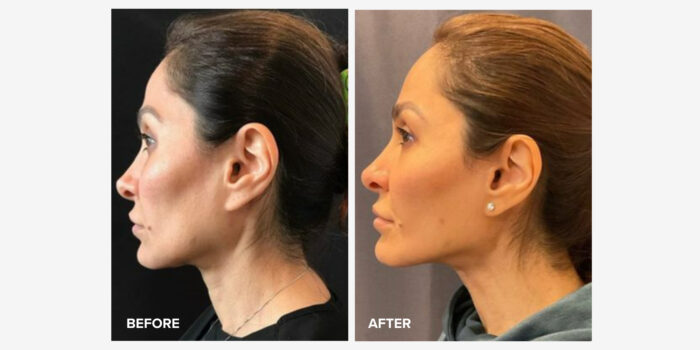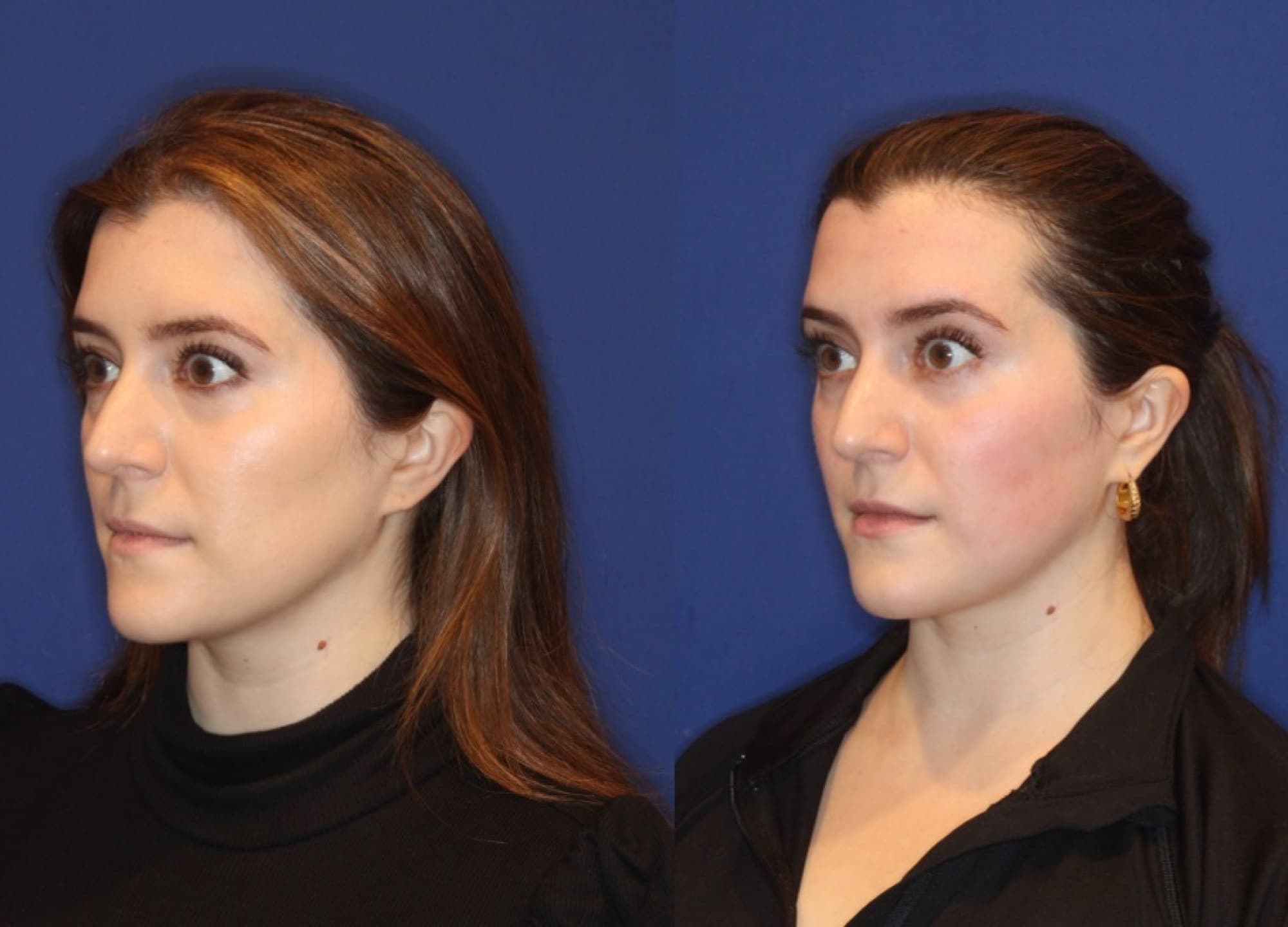After years of exposure to beauty products and aesthetic treatments, I must admit that I’ve turned into quite the skeptic. Almost every brand promises that their singular item will change my life, take “years off the clock,” or negate the need for plastic surgery. Bold claims. I realized long ago that nothing can replace plastic surgery—gravity comes for us all—and there have been only a handful of things that have changed my life or taken years off the clock (the Dyson Airwrap, gel manicures, chemical peels, prescription retinoids, and neurotoxins among them).
But I must confess, after going through a course of treatment, the buzzy new Emface device did a pretty impressive job at turning this 34-year-old cynic into a convert.
What is Emface?
The technology behind BTL’s Emface is similar to but ultimately different from its manufacturer’s predecessor, a body sculpting device known as Emsculpt. While Emsculpt uses radiofrequency (RF) and high-frequency electromagnetic stimulation (HIFEM) to burn fat and tone muscles, Emface features a combo of radiofrequency and high-intensity focused electrical stimulation (HIFES), specifically treating the elevator muscles of the face—the frontalis, zygomaticus major and minor, and risorius.
“Emface’s HIFES increases the density of the muscles, to lift and create natural volume. The RF helps with the muscle treatment and also stimulates collagen and elastin,” says Dr. Jennifer Levine, board-certified facial plastic surgeon in New York City. The formation of new collagen and elastin not only helps strengthen and tighten skin but improves its elasticity (aka its “snap,” or how quickly it returns to normal when pinched) and smoothes out texture irregularities, like fine lines and wrinkles.
Having tried Emsculpt twice before and enjoyed the unique ab-crunching and warming experience, I seized the opportunity to check out Emface firsthand. I underwent four treatments, spaced one week apart, the standard course of treatment, at Dr. Levine’s practice. I didn’t know what I was in for when I stepped in for my first experience but was surprised that after taking my before photo, I had to take off my shirt. Definitely an unexpected step for a face treatment, but it was for a key reason—to apply the grounding pad to my left shoulder blade.
According to Dr. Levine’s medical aesthetician, Christian Kelly, this was to help the radiofrequency complete the circuit, which allows the treatment to focus on the target facial muscles rather than traveling beyond. After three more applicators were stuck onto my face—one large one on my forehead and then one on each cheek—we fired up the machine, with no need for any numbing cream.
What does Emface feel like?
The Emface machine delivers a pulsing sequence of forehead, cheeks, cheeks on repeat, gradually building in intensity over the course of the 20-minute treatment. I felt minimal movement in my brows upon the first contraction of my forehead (possibly due to the Botox I’d gotten nearly two months before), but what I really felt was the sensation traveling up and into my scalp, like a tingling scalp massage. Kind of confusing, as the pad was only sitting on my forehead. “The SMAS, submuscular aponeurotic system, is a layer of fibroconnective tissue enveloping the muscles of facial expression,” explains Dr. Levine. “That starts mid scalp and extends to the clavicle—the frontalis is part of that layer, so it is normal to feel the treatment in the scalp.”
It was the cheeks aspect of the sequence, though, that made me giggle. If you’ve ever gotten a microcurrent facial before, you know that your face can scrunch in unpredictable and goofy ways; Emface made me squint hard in one eye while scrunching my nose. That’s also totally normal, says Dr. Levine, because the orbicularis muscle (the one that makes crow’s-feet) is connected to the zygomaticus muscle that’s being stimulated during treatment.
Once the 20 minutes of treatment passed, Christian peeled off all the applicators and sent me on my way. I had a subtle, flattering glow from the warmth of the treatment—nothing like the total tomato face I get after a SoulCycle class. There was no downtime and no discomfort, and I continued with my day. I did this four times.
Related: Derms Explain How Emface Works and Whether It Affects Botox and Fillers
My Emface results
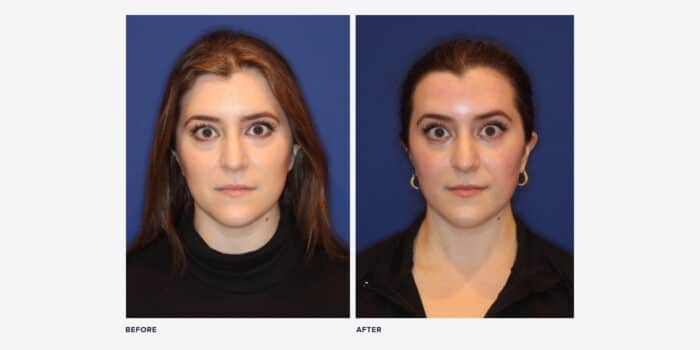
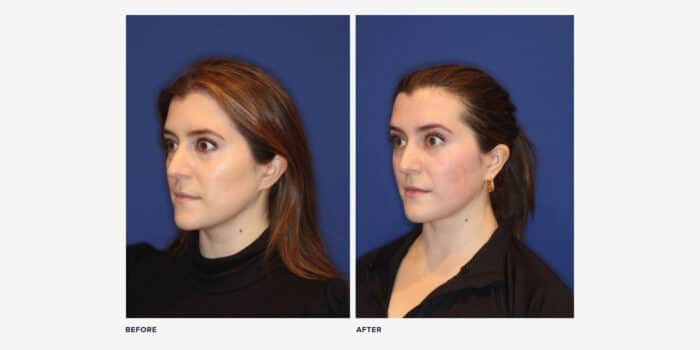
Ahead of my second treatment, Christian said she saw that the first one had already made a subtle difference in my face, but I wasn’t yet convinced. That said, I see myself every day, and I figured that Emface results are comparable to those of dieting or working out—you won’t really be able to see it yourself without before and after pics. But I was proven wrong the day after the third session: Usually, when taking the subway, I am horrified by my reflection in the windows, noticing every little “flaw” once pointed out, against my will, by a dermatologist. (That overhead lighting doesn’t do anyone any favors.) That evening though, on my way to an appointment, I caught a flattering glimpse of myself and wondered if I had Emface to thank for it.
After seeing my before-and-afters, I do feel the need to credit BTL, because while the results are subtle, I can see clear differences. I feel my skin looks firmer and that I appear to have a sharper jawline, less heaviness around the marionette line area, a more lifted brow, and dare I say, a juicier cheek? Christian noted that the results will continue to improve over subsequent months; I’ll be back to take more photos at the one-month and three-month marks. “Results should last around one year,” says Dr. Levine.
I am fortunate enough to try a lot of treatments, some of which Dr. Levine recommends pairing with Emface. “I like to combine Emface with neuromodulators like Botox, Xeomin, and Dysport, because Emface works on the elevators of the face and neuromodulators are used mainly for the depressors—except for the frontalis—such as the corrugators or platysma, DAO, and others,” she says. I do get Botox injections a few times a year, typically in the forehead, in the glabella, and for crow’s-feet as well as in the marionette line-forming DAO muscle, so I was pleased to hear that my self-imposed combination therapy was actually working in tandem.
Fillers, with which I haven’t been treated, are also a worthy pairing with Emface: “Some strategic volume replacement using injectable fillers may also enhance results to areas that the Emface does not treat, such as lips or temples,” says Dr. Levine.
While I’m not yet looking to surgery for skin support, many providers are recommending this treatment as a preemptive strike ahead of a facelift. If you’re looking to mimic the results of a facelift with Emface, remember that surgery truly is the only thing that can get you this outcome; but if you’re interested in a nonsurgical lift, Dr. Levine suggests combining Emface with Ultherapy. “Ultherapy is the only other nonsurgical treatment that also targets the SMAS,” she says.
The pitfalls of gravity, like gray hair and taxes, are inevitable, but my experience with Emface has me convinced that it could definitely slow signs of descent. I’m not sure that Emface will fit into my budget every year—Emface costs $4,500, on average. But would I do it again given the chance? Absolutely.
More Emface before and afters
